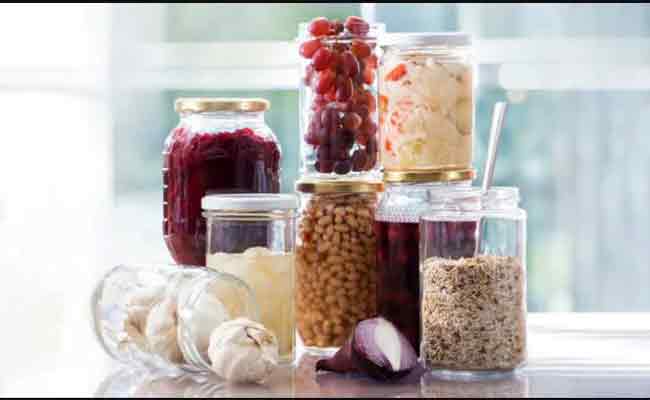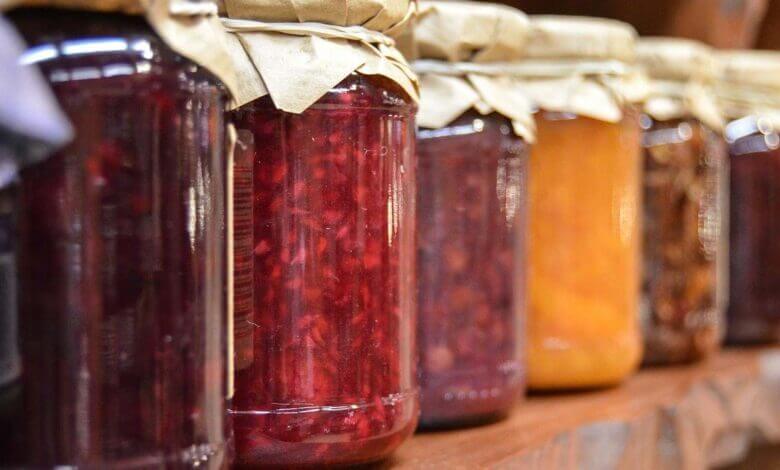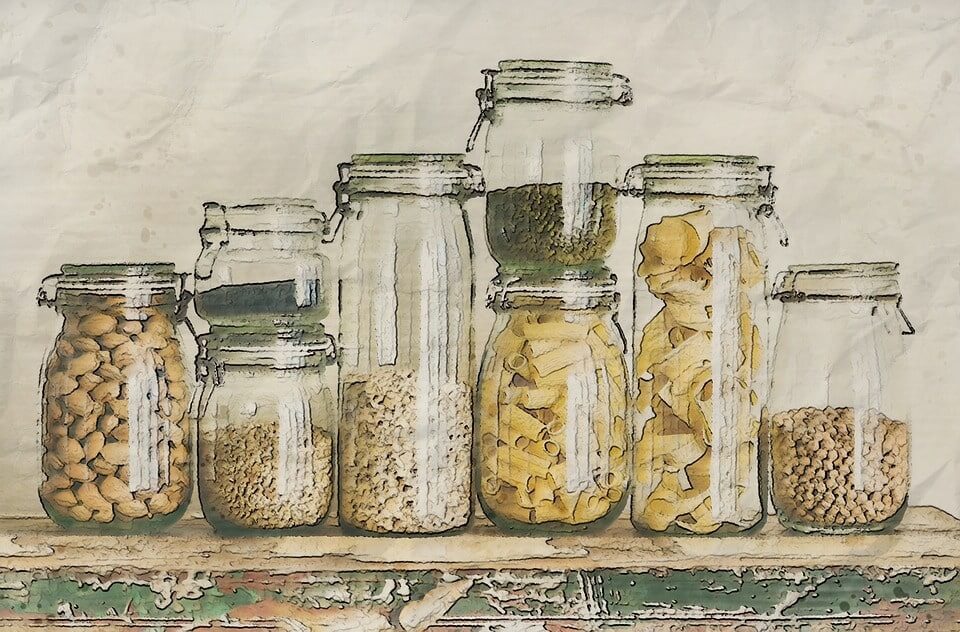When visiting a market, you will undoubtedly come across many types of food product packaging. Some foods are sold in containers, while others are sold in glass jars and a few in plastic bottles. You will very probably come across food covered in foil. Each of these packaged food options has advantages and disadvantages in terms of convenience, health, recycling, and disposal. Bottled and jarred packaged items are popular for their convenience factor. However, packaged products, like any fast food, include a few unexpected hazards. However, with a little knowledge and experience, you can assume which packaged items are worth it and which are bad for health.
Table of Contents
What are Bottled and Jarred packaged goods?
Alternative bottle technologies are now being used. The glass has been replaced by cans, foil, plastic wraps, and other materials. Different types of distinctive packaging offer various advantages. The food packaging system has changed in conjunction with technological advancements. However, they continue to perform the same tasks in keeping food hygienic, safe, and free of spoilage. Food storage containers include canisters, glass containers, plastic trays, and coils.
Most supermarkets offer these bottled and jarred-packaged goods. This is beneficial to both retailers and consumers. The demand for these items has been continuously growing in recent years or since the post-pandemic years. These Bottled and Jarred Packaged Goods, on the other hand, have several drawbacks. This post will inform you about the different types of materials used for packaging as well as the advantages and disadvantages of packaged foods.
History of Bottled and Jarred Packaged Goods
When refrigerators were invented in the 1900s, individuals began to keep their products in bottled and jarred packaging. They used to keep the food in iceboxes before these packaging.
To begin with, bottled and jarred products were only used to preserve a few food items such as pickled meat, fish, milk, and so on.
However, as a result of technological innovation and mass production, bottled and jarred packaging may now keep a wide range of products, both edible and non-edible.
Aside from bottled and jarred goods, the market offers a wide range of packaging options, including cans, tins, and containers. Some meals are also wrapped in heavy-duty aluminum foil.
Because the fundamental goal of packaging is to protect the goods, the sort of packaging you use is largely dependent on the product to be wrapped.
Glass containers with airtight lids are another kind of packaging that is still in high demand. These glass containers were used to store wine and other alcoholic beverages. However, they are now used for marketing household chemicals, soft and hard drinks, and so forth.
The main reason for using glass containers with airtight lids is that they can be recycled and reused while also preventing harmful germs from polluting the products. Furthermore, they are far healthier than canned products.
Glass jars used to sell hundreds of food goods such as slices of fruits and vegetables, milk, and so on are examples of modern glass containers. Furthermore, these jars include a variety of non-food items such as pet food, pastes, and so on.
What are the different types of materials used for packaging?
Many different materials are used for packaging, here are some different types of materials used for packaging:
Glass Packaging
Glass is the most conventional type of product packaging. It is still used in the packaging of various goods and beverages. Pickles, honey, and alcohol are examples of items that are commonly packed in glass.
Because it can securely seal perishable things, glass makes ideal packaging. Because it is more delicate than other choices, it needs a little more care.
Aluminum Packaging
This light metal is commonly used in the packaging of soda, beer, and canned products. Aluminum is one of the most costly product packaging materials.
As a result, most industries promote the recycling of canned foods. This not only saves a lot of money but also benefits the environment.
Cardboard Packaging
Cardboard is the most commonly used packaging material on earth today. It is lightweight, long-lasting, cost-effective, and environmentally beneficial all at the same time. Cartons, cardboard sheets, and cardboard rolls are also available in the market. This material is popular among product makers because of its ease of production and environmental friendliness.
Metal Packaging
One of the best examples of metal packaging is the can. Because they are metal containers, there is no question about their strong seal, which helps to maintain and protect the food without any exterior food leakage. These containers are typically used to keep things such as fish, fruits, and vegetables.
Wood Packaging
Wood packaging includes a variety of products made from hardwood or softwood, such as crates, boxes, and drums. The wood packaging is durable and adaptable, and it may be reused for up to five years. This style of packaging is commonly used in the food and beverage, shipping, and transportation industries.
Plastics Packaging
Plastic is another widely used material in food packaging. It’s commonly seen in bottles, bowls, pots, trays, foils, cups, bags, and pouches. Indeed, the packaging business consumes 40% of all plastic produced. The win-win factors that work in its favor are its cheaper cost and lightweight.
On the other hand, the health risks associated with the usage of this material have long been debated.
Advantages and Disadvantages of bottled and jarred packaged goods
Here are the main advantages of bottled and jarred packaged goods:

Hygiene
The majority of users prefer packaged over unpackaged goods. They believe it is of great quality, free of bacteria and germs, attractive in look and description, and so on. Food packaging makes it easy to transport and store a variety of meals and drinks safely.
Packaging reduces exposure to airborne pollutants and microorganisms that might cause illness during handling, such as food poisoning. The use of recycled material for food packaging, on the other hand, presents difficulties. Authorities have set strong requirements in place to guarantee that firms that utilize recycled materials are safe and clean. Packaging makes it easier to keep food clean at home because you don’t have to leave it out in the open.
Eco-Friendly
Bottled and jarred packaged goods are an excellent value for many reasons. To begin with, the fundamental advantage of utilizing jars and bottles for packing is that they are recyclable. However, jar containers are indeed quite expensive per unit. However, there is a cost to its environmental benefits.
Furthermore, using glass jars to package goods is less chemical-laden than using any plastic container. As a result, we may state that it is eco-friendly. Moreover, glass contents are indeed completely recyclable, making them an excellent alternative for you. Of course, as previously said, the quality makes it somewhat more costly than plastic ones.
However, when we compare the two, we can all agree that glass outperforms plastic in terms of aesthetics and appeal.
Food is conserved
These products are suitable for consumption at any time of day. They’re also lightweight and easy to travel and store. They don’t need to be packaged or stored in containers. Food that has been packed is of higher quality since it is protected from both environmental and physical damage during food handling.
Glass containers are utilized to keep their products fresher for longer. Last but not least is the convenience factor. They also save us time and effort when it comes to grocery shopping, meal preparation, and cooking.
Extend the product’s life
One of the main advantages of bottled and jarred packaged goods is that by putting these goods in these kinds of packaging, people can extend the life of certain goods, allowing them to last longer.
Plastic, for example, has the benefit of allowing you to change the air, which helps in the prevention of discoloration and extends the life of the item. This procedure is used by many companies since it keeps products fresher for longer in metal containers.
Pre-packaged foods are easier to travel than unpackaged foods. As a result, most customers prefer to buy packaged goods that have been bottled or jarred over unpackaged items.
Easily transportable and reusable
Jars and bottles have two main advantages they are portable and reusable. They are not easily destroyed or disposed of, unlike conventional packing materials. Jars are also simple to store and handle. Because of these factors, jarred and bottle-packed foods are a good option for businesses. Regardless of whether you use jars or bottles, a jar is a terrific option for any consumer.
Here are some disadvantages of bottled and jarred packaged goods:

Health
The packaging material has a significant impact on the health of customers. If the packaging is inadequate or the packaging material is of poor quality, the consumer will face plenty of problems.
People are already dealing with several challenges as a result of plastic packaging. As a result, it is essential to use high-quality packing materials to protect customers’ health.
The majority of processed foods are available in pre-packaged containers. People who are worried about their health avoid purchasing packaged items because they fear it will affect their health and lead to complications. People are becoming more health-conscious, which is one of the main reasons why many people choose unpackaged food over packaged food.
Non-environmental friendly
Many containers are harmful to the environment, with plastic being one of the most obvious examples. Plastic-based items, such as bags and bottles, are bad for the environment. These are some of the reasons why bottled and jarred packaged goods are unappealing.
Cost
Food packaging increases the cost of food. Packaging could contribute 10% to 50% of the cost of food. The demand for smaller packages that are consistent with health and government regulations raises production costs, which are subsequently passed on to the customer. Furthermore, the shipping and storage of food goods in smaller packaging is more expensive than those in bulk.
It would not be wrong to say that the packaging increases the price of packaged items. The cost of storing and shipping bottled and jarred packaged products looks to be excessively expensive when compared to other packaging items.
Food Waste
When purchasing bottled and jarred food products in bulk containers, it can be tough to predict how much food is left since there are no liens on the container to indicate levels; as a result, some people do not realize they have bought more than they need and end up throwing it away or having their pets eat it instead! Furthermore, if you open a box and do not consume all of its contents before they expire, you may be forced to throw both your purchase and what is within, which is a waste of money.
Importance of Packaging
Packaging plays an important role in today’s businesses and their customers, as well as functions related to marketing, sales, and brand awareness.
Packaging has a crucial functional role in protecting items throughout transportation and until the buyer opens the box. If the consumer receives a damaged product, their opinion of your company will be affected, and you will most likely have to replace the product or refund their money. The packaging should also be simple to open, and the design should make it simple to remove the product from the box since this improves the consumer experience.
Another key role that packaging serves is to help consumers in identifying products. The packaging should give enough information, in the form of language, graphics, and other forms of information, enabling the customer to easily decide what is within the box. Differences in packaging, such as color, can also be used to distinguish between various models of a product under the same brand.
Also, Check – Ashlesha Thakur (Mehek Thakur) Biography
Which is better: glass jars or plastic bottles?
Glass jars are frequently believed to be the best product packaging. They are also more eco-friendly than plastic bottles. Glass is a versatile product. Glass can be formed into a variety of shapes and sizes. It is also economical and simple, which makes it appealing to customers. Plastic bottles are an excellent choice for packing since they can transport liquids and are lightweight. When it comes to deciding which one you like, there is no right or wrong answer. It all comes down to the product you select and what works best for you.
Better Consumer Protection
I’ve come to realize that jarred foods are superior to bottled foods over the last few years. This is mostly due to the lids making it easier to recycle the jars. The fact that lids are not recyclable is a disadvantage in the bottled food industry. The jarred food industry should develop more recyclable packaging and be more eco-friendly in their packaging. This would make recycling and becoming environmentally friendly easy for customers. Jarred food is beneficial for customers since it is easier to recycle and more accessible. Without the lids or contents, jarred food can be recycled. Food in a bottle cannot. Jarred foods are significantly easier to recycle.
Long-Term Guarantee
All jarred and bottle-made products are covered by a long-term warranty. This is the customer’s preferred option. Plastic packaging is more harmful to the environment. The fundamental advantage of jarred and packed items is that they are guaranteed for a long time. This ensures that the items will reach in good condition.
What Should You Avoid When Buying Packaged Goods?
There are a few things to keep in mind when buying packaged goods:
Enriched Food Products:
Anything labeled “Enriched” on the market should be avoided. These enriched goods are typically the outcome of experiments in which food companies eliminate some of the product’s vital nutritious elements to make it more appealing to customers. Instead of improving the product, they deprive it of its nutritious value.
Fortified Food Products:
Although the terms “enriched” and “fortified” appear to have similar meanings, they are completely contradictory.
Fortified items should also be avoided since they are frequently loaded up with extra vitamins and minerals to artificially boost the nutritional content of the food product.
Conclusion on Bottled and jarred packaged goods
Food that has been processed, canned, or otherwise preserved in an airtight container is referred to as “Bottled and Jarred food.” Food degradation is caused by bacteria that grow in moist conditions at the proper temperature.
As people become more concerned that their food has become heavily polluted, they are moving toward more natural and organic products. However, the majority of organic food items are expensive, and the flavor of these foods might be destroyed by the chemicals used to manufacture them. Bottled and jarred foods solve a lot of this problem by providing customers with an affordable and nutritious option for their everyday eating habits.
FAQs about bottled and jarred packaged goods
What are packaged goods?
Packaged goods are products that come in containers like jars, containers, bottles, tins, cans, and cartons.
Glass jars or plastic bottles which are better?
Jarred and bottle packaged products are well-known all over the world. They’re both excellent, so you should choose one depending on your budget and personal preferences.
What is the main cause of food waste?
The major causes of food waste are unskilled food handling and packaging, inadequate food storage system, and insufficient infrastructure.
Is it true that bottled and jarred packaged foods have a longer shelf life?
You may extend the life of jarred and packaged foods by using the proper packaging materials.



















